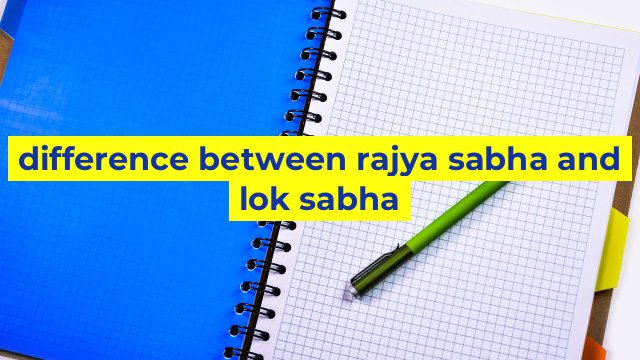The Difference Between Rajya Sabha and Lok Sabha
India is the world’s largest democracy, with a parliamentary system of government. It has two houses that make up its parliament – the Rajya Sabha (Council of States) and the Lok Sabha (House of the People). Although both houses play essential roles in the country’s decision-making process, there are significant differences between them.
Composition
One of the primary differences between the Rajya Sabha and Lok Sabha is their composition. The Lok Sabha has a total of 545 members, which includes 543 members elected from constituencies across the country and two nominated members. The Rajya Sabha, on the other hand, has a total of 245 members, out of which 233 are elected by the state and union territories while the remaining 12 are nominated by the President of India.
Representative Function
Another significant difference between the two houses is their representative function. The Lok Sabha is known as the lower house of the Indian Parliament and plays a critical role in representing the people of India. Its members are elected through a direct election by the people, and they represent their respective constituencies. In contrast, the Rajya Sabha represents the states and union territories of India.
Term of Office
The term of office for the members of the Lok Sabha and Rajya Sabha varies significantly. The Lok Sabha members are elected for a term of five years, after which they are subject to re-election. The Rajya Sabha members, on the other hand, serve a term of six years. However, the Rajya Sabha is a permanent house, and its members are not subjected to re-election.
Legislative Function
Both the Rajya Sabha and Lok Sabha play critical roles in the legislative process. However, the legislative function of these two houses varies slightly. The Lok Sabha has more significant powers in the legislative process, especially in the passing of money bills. The Rajya Sabha can only make recommendations to the Lok Sabha regarding money bills, and it cannot reject them entirely.
Conclusion
In summary, the Rajya Sabha and Lok Sabha have different roles and functions in the Indian parliamentary system. While the Lok Sabha acts as the primary representative of the people of India, the Rajya Sabha represents the states and union territories. The composition, representative function, term of office and legislative function of these two houses are also different. It is important to understand these key differences to fully comprehend the parliamentary system of India.
Table difference between rajya sabha and lok sabha
| Parameter | Rajya Sabha | Lok Sabha |
|---|---|---|
| Number of Members | 250 | 545 |
| Method of Election | Indirect | Direct |
| Tenure of Members | 6 years | 5 years |
| Representation of States | Equal representation of states | Representation based on population |
| Representation of Union Territories | 12 nominated members | No representation |
| Role in Legislative Process | Can only suggest amendments to bills sent by Lok Sabha and can veto non-financial bills for 14 days | Can introduce and pass bills without veto power |
